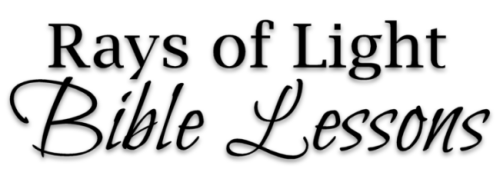THE THIRD SEAL IS OPENED
Rev 6:5-6 And when He had opened the third seal, I heard the third beast say, Come and see. And I beheld, and lo a black horse; and he that sat on him had a pair of balances in his hand. And I heard a voice in the midst of the four beasts say, A measure of wheat for a penny, and three measures of barley for a penny; and see thou hurt not the oil and the wine.
The Lamb of God, Christ Jesus, the only being having the authority to do so, opened the third seal of the book, containing the visual prophecy of things which must shortly come to pass (Rev. 1:1). The first seal revealed the white horse and its rider, the second, the red horse and its rider. With the opening of the third seal, the third beast invited the apostle John to come and see. A black horse, and he that sat on him, was brought into his view, which he likewise recorded for our learning. On each occasion the color of the horse was changed to depict another period of history that occurred relatively soon after this revelation was revealed and written. The first rider carried a bow indicating conquest, the second, a sword which told of a bloody civil war, and, now the third rider was carrying something entirely different. He had a pair of balances in his hand. As was true with the other horses and their riders, this black horse and rider, carrying balances (scales), must have symbolical significance.
Throughout God's word, the color black has depicted mourning. (See Lam. 5:10; Joel 2:6; Nah. 2:10). Whether it resulted from some calamity, or by reason of sorrow, the darkness of mourning was demonstrated by some reference to the color black. As with other symbols, in order to gain its true meaning, it is necessary to look into the near future of that period of time for some earthly, human misery, misfortune, calamitous war, or other disaster. The color of the horse simply foretells of a future calamity, but does not indicate the reason it occurred. Its identity is symbolized by the instrument held by the rider of the black horse - a pair of balances. Scales have been used in all ages to signify judgments, whether they may be just or unjust. However, when they are used symbolically to denote the weighing out of various forms of food used to nourish the human body, as in this instance, they always represent the scarcity of food, due to disasters brought on by such things as floods, droughts, insect infestation, etc., (See Lev. 26:26; Ezek. 4:16-17).
A voice in the midst of the four beasts described these items of food in this manner: a measure of wheat, ...and three measures of barley, each as having the cost, or value, of a penny. According to a biblical table of weights and measures, a "measure" of any dry food was a day's allowance for an adult, and was approximately equal to an English quart as we know it today. Also, according to a table of money during the New Testament era, a "penny" was also known as either a Roman Denarius, or a Jewish Shekel, which was described as the usual price paid for a day's labor (Matt. 20:2&9). It is also worthy to note that, according to biblical historians, the costs given here for these amounts of food, were extremely inflated and oppressive to those that need food, which indicated a dire scarcity, due to some disastrous cause of famine. The voice in the midst of the four beasts added this thought: and see thou hurt not the oil and the wine, which has given rise to a variety of differing interpretations. During these biblical times, oil and wine were as necessary to family diets as the grains previously noted, and this passage seems to be a warning, during times of famine, to use these items sparingly in order that their shortage, due to famine, would be sufficient.
Searching the annals of history, we are unable to find a period within a distinct time frame, as were the periods prophesied under the first and second seals. A period was found that exactly fit the symbolic representations of the third seal - that of extreme famine. However, its time frame is more difficult to define because it, not only overlaps the era of internal strive and civil unrest, but also continues into the period that is later revealed when the fourth seal is removed. We can say, with historical accuracy, that such a period of dire scarcity of food did exist as a direct result of the calamitous raging of civil war. Destruction of farm land, due to numerous military battles, led to, once productive fields, being uncultivated and remaining fallow. This, along with heavy, oppressive taxation to fund the governments during the years of civil wars and internal strife, and accompanied by economic inflation, led to enormous increases in the cost of all food supplies. These facts brought about a famine of tremendous, unheard of, proportions. This historical era very well fulfills the symbolic depiction of the black horse and its rider.

